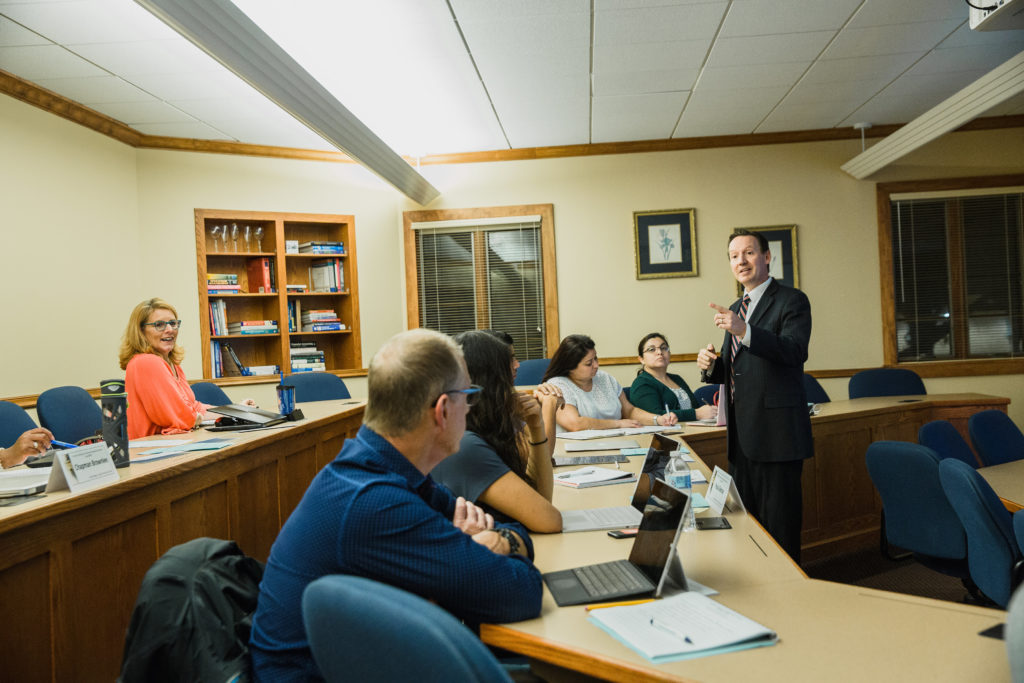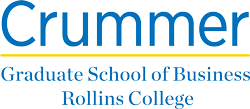THOUGHT LEADERSHIP
How COVID-19 Broke the Global Supply Chain

Crummer Graduate School Professor of Operations Management Dr. Keenan Yoho explains the delays we’ve seen in global supply chains and what this could mean for the future of how we look at the global economy.
The past half century of global trade has created enormous wealth as well as social dislocation. On balance, the gains have been largely touted as having far outweighed the losses.
Until recently, most people have never really thought much about the function of global supply chains, and for good reason – there was no need to. If you needed a certain good, it generally was not hard to obtain.
The COVID-19 pandemic has changed that. Supply chains are coming up in casual conversations as people scour the aisles of their local supermarkets, searching for basic household items like toilet paper, diapers, soap, and medicines. Alarmingly, critical medical consumables like N95 face masks and surgical gloves, as well as durable medical equipment such as ventilators, are also in short supply.
The COVID-19 pandemic is disrupting supply, increasing short-term demand, and sending shockwaves throughout the global economy.
Crummer Graduate School of Business Professor of Operations Management Dr. Keenan Yoho’s life work is in supply chains and says this is a unique moment in the 21st century global economy. An expert in supply chain and operations management, Dr. Yoho has spent more than a decade working in national security as well as an advisor to private U.S. and international organizations including IBM, General Motors, General Mills, Intel, and many more.
The Basics of the Supply Chain
At its core, supply chain management involves the design, measurement, control and direction of flows of information, goods and services that provide value to customers and the end-user. The primary challenge is managing in environments characterized by uncertainty and dealing with disruptions. Dr. Henrique Correa teaches an entire course on making supply meet demand where students learn the intricacies of managing production and supply to meet uncertain demand.
For a basic consumable item like toilet paper, there tends to not be many spikes in demand over time as the consumption of this product is stable.

However, when people begin buying multiples of their normal amount of a particular consumable item, such as toilet paper, then there are shortages because the supply chain for tissue paper is built primarily for efficiency and not responsiveness.
“When you get a surge in demand for an item that has a supply chain designed for efficiency, the wait time will likely be high because there is no slack in the system to respond to the demand surge,” explained Dr. Yoho. “Certainly, when everyone decides they are going to bypass getting a two-week supply of toilet paper and instead get two months’ supply, you are going to have a huge backlog.”
Dr. Yoho explains that with many items like toilet paper and diapers, which have a relatively flat level of demand most of the time, companies have organized their strategy to produce to that level of demand, to ultimately maximize their bottom line through efficiency, which requires operating very near their maximum capacity.
Complicating matters is the movement to build “lean operations” over the last 40 years and drive out slack and redundancy in supply chains has been largely successful. The results have been firms with less redundancy and waste based upon reliable and consistent delivery in their supply chains.
In a perfect world, companies are able to closely match the supply with customer demand and ensure their operations are as cost-efficient as possible. That is, of course, until something like COVID-19 happens.
“We are victims of our own success when it comes to lean operations,” said Dr. Yoho.
National Strategy
Dr. Yoho says a next important step to understanding the effects of COVID-19 on the supply chain, is understanding the United States’ strategy on outsourcing goods and services, and how that may change.
Over the course of the past half century, the United States has organized its entire economy on letting the market decide how we are going to supply our goods. That means outsourcing to whoever can make produce the goods at the best price. Most of the time, the most cost-efficient strategy has been outsourcing to countries like China. It’s made the supply chain longer and the sluggishness of the current supply chain is evident when we see the shortage of medical supplies in New York.
Critical supplies like medical equipment, pharmaceuticals, and food have been outsourced to China.
“Most Americans know their iPhone comes from China but they do not know that more than 80% of all of their antibiotics, vitamin C and tilapia, 50% of their cod and apple juice, and 34% of their mushrooms come from China as well,” said Dr. Yoho.
So, while China’s economy was slowed tremendously by the COVID-19 virus, consequentially, exports were disrupted. Also, Dr. Yoho says nations will take care of their own people first, so there could be serious issues with supply when an export means your nation has less than it may need.
“We have outsourced a significant part of our supply chain to what the U.S. Department of Defense considers to be a strategic competitor,” said Dr. Yoho. “Assuming we haven’t lost the ability to make certain things, lag and wait time to produce them ourselves is going to be extraordinarily long.”
Could we see more countries start to produce goods domestically, instead of outsourcing? Dr. Yoho says the jury is still out on that, and that it will likely depend upon how much structural damage is done as a result of current economic relationships.

However, he says this is a perfect example of a low probability risk with grave consequences. When everyone is getting along and there are long periods of peace, nations are more inclined to organize along market, rather than strategic, principles.
“There is a strategic aspect we have to look at this from,” said Dr. Yoho. “Are we going to let the market organize our entire economy, or will we have a strategic sensibility in organizing some parts of it in the future? Will we continue to rely upon a strategic competitor for critical medicines, protective, or medical equipment?”
Dr. Yoho says that such a public policy question – and not a purely economic one – will likely be given a little more consideration in the coming months.
“However, the damage is going to have to be very severe to shake the kind of market fundamentalism that drives the way we do business, make economic decisions, and structure our supply chains in the U.S.,” said Dr. Yoho.
The Precarious Zone of Small Businesses
The COVID-19 pandemic will likely bring massive changes to operations and supply chain risk management in small businesses.
“The biggest existential impact will be on small businesses,” said Dr. Yoho. “That side of the economy is in a very precarious position right now.”
Unfortunately, many small businesses simply don’t have the slack in their operations to sustain a global pandemic and its associated supply and demand disruptions.
Small businesses like family restaurants don’t have the demand to sustain operations. It’s hard to forecast how much food to buy when there’s an unknown level of demand. Food they have in their refrigerators and coolers may be spoiling and it is expensive to replace.
“The burn rate on many of these small businesses may be one month or two months, and to do that you might have to lay off employees,” said Dr. Yoho.
While some corporations may receive large bailouts, the majority of small businesses don’t have that luxury, and their access to loans and credit may not be enough.
“If the business doesn’t own their building outright, they are paying somebody to rent the space, and if the owner of the space doesn’t own it outright, they are paying a mortgage on it,” said Dr. Yoho. “There is a very clear domino effect to this.”
It’s not just small business restaurant owners that could be affected.
“Small businesses make critical aerospace parts, industrial machinery castings and parts, and maintain heating and ventilation systems,” said Dr. Yoho. “These small firms are in nearly every industrial sector and the implications of the current disruption may not be fully realized for weeks or months.”
While the COVID-19 situation is still very much developing and fluid at this time, it’s already becoming evident that how countries, companies, and the public think about supply chain management may forever be altered.

